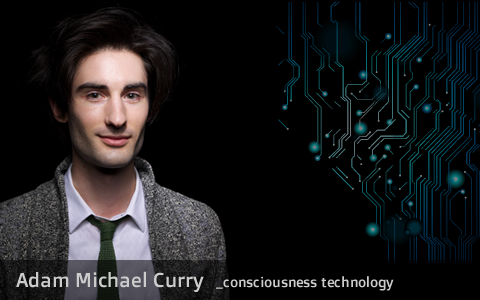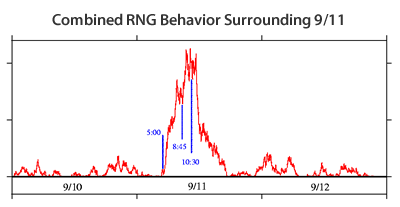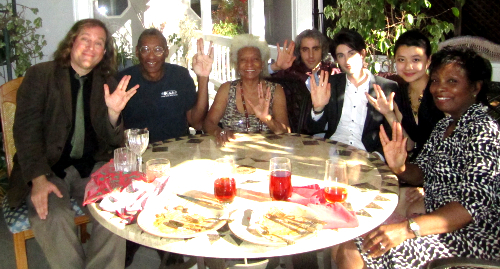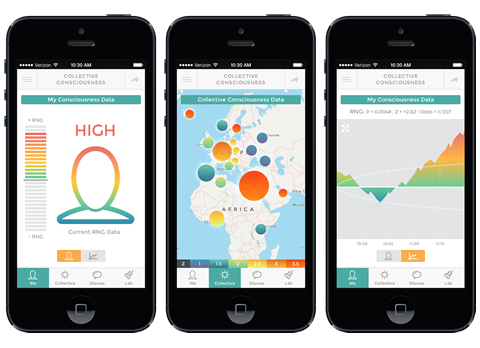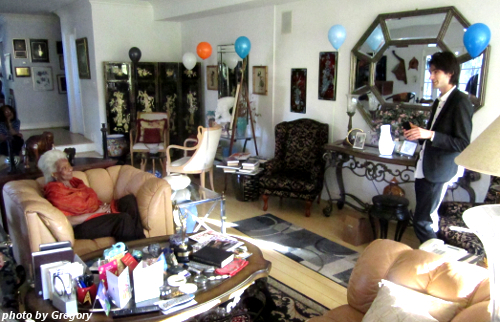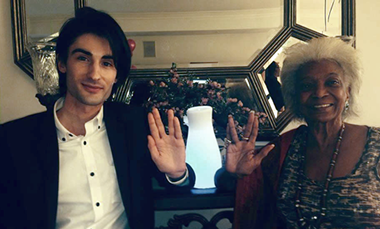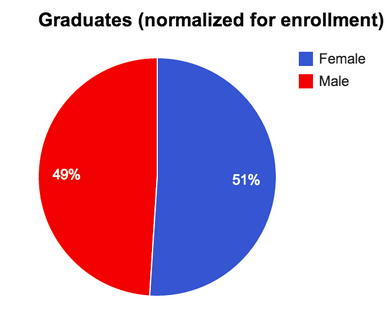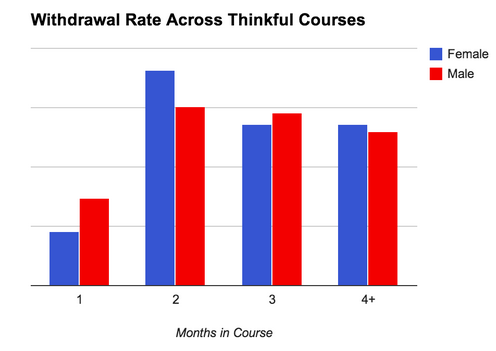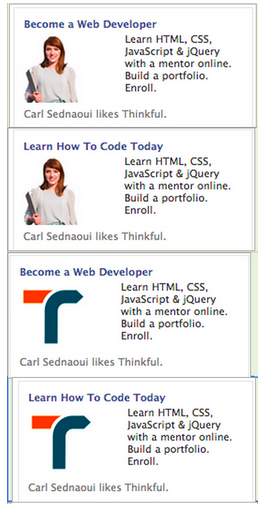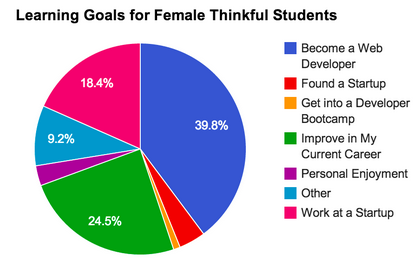Last week Chuck and Janet Bloom gave their only daughter a night off by taking their grandchildren out for dinner at a local pizza parlor. Both were looking forward to a playful evening with the kids. But as soon as they sat at the table, even before the menus appeared, they noted with dismay that their beloved grandkids were more engaged with and attentive to their holiday-acquired digital devices than to their loving, pizza-partying grandparents. Miriam, their sweet 14-year-old granddaughter, had her eyes intently focused on the contents of her iPad Facebook page. Briana, the 11-year-old, was posting her whereabouts on Twitter, Facebook and Foursquare. And at the far end of the table, 7-year-old Sam's lips pursed in silent focus as he furiously engaged in a PlayStation cowboy shootout. Feeling frustrated, hurt, and angry -- like they might as well have dined alone -- Chuck and Janet quietly launched into an oft-held discussion about how these devices are ruining not just their three grandkids, but young people in general.
At the very same moment and just one table over, half a dozen 20-something work friends were seated, also preparing to order pizza. And just one look over at that crowd affirmed Chuck and Janet's worries about a "lost generation." At that table, two of the diners amicably swapped office gossip, but the others were as engaged with their digital devices as the aforementioned grandkids. What the clucking Chuck and Janet failed to notice was that no one at this second table seemed even remotely concerned or bothered by the fact that technology held as much sway as actual people.
So, why were Chuck and Janet seething about the "digital snub" from their grandchildren, while everyone at the other table managed to enjoy themselves, completely unruffled by the ever-shifting sands of live conversation, texting, tweeting and posting? In great part this difference stems from the fact that Chuck and Janet are digital immigrants, while their grandkids and the 20-somethings one table over are all digital natives -- different generations divided by different definitions of personal respect, attentiveness, interpersonal communication and what constitutes a meaningful relationship.
Digital Natives vs. Digital Immigrants
Generally speaking, people born before 1980 are digital immigrants, and those born after are digital natives. This somewhat arbitrary dividing line attempts to separate those who grew up actively using the Internet and those who did not. Another, and perhaps better, way of looking at things is to say that digital natives unquestioningly value and appreciate the role that digital technology plays in their lives, whereas digital immigrants hold mixed views on the subject. Not surprisingly, thanks to continual advances in digital technology (such as the introduction of Internet-enabled smartphones a few years ago), the separation between digital natives and digital immigrants is widening almost by the day, resulting not so much in a generation gap as a generation chasm.
This new generation gap is evident in practically every facet of modern life. For instance, there are extreme differences in the ways digital natives and digital immigrants conduct business, gather news and information and spend their paychecks. They also differ significantly in the ways they define personal privacy, experience entertainment and socially engage (as evidenced in the pizza restaurant scenario above). Simply put, in a mere 25 years our basic forms of interpersonal communication and interaction have been drastically reformatted, and those who prefer the old ways of mostly face-to-face contact often feel left out and unappreciated.
In some ways this new generation gap sounds a lot like every other generation gap in history. However, previous generation gaps have mostly centered on young people vocally, visually and in-real-time challenging the beliefs and experiences of their elders. Today, the divide is more about the fact that young people neither see nor hear their elders because, from a communications standpoint, the two generations are not in the same room. For instance, in the pizza restaurant Chuck and Janet are "present" and interacting at the dinner table, while their grandkids are "present" and interacting in a completely different, entirely digital universe. In some ways, this means that Chuck and Janet are dinosaurs. Basically, because they're not texting, tweeting or posting to social media, they're not effectively communicating with their grandkids. Thus it seems the 1960s mantra that Chuck and Janet used to utter, "Don't trust anyone over 30," has for their grandkids morphed into, "We don't care about anyone over 30 because we can't see or hear them."
Connection/Disconnection
Interestingly, many digital natives think that young people are isolated and disconnected -- more interested in machines than people. In reality, nothing could be further from the truth. In fact, no generation in history has been more interconnected than Generations Y and Z. Statistics readily back this up. One study found that in 2009 more than half of American teens logged on to a social media site at least once per day, and nearly a quarter logged on 10 or more times per day. In the same year, a study by the Pew Internet and American Life Project found that more than three-quarters of U.S. teens owned a cellphone, with 88 percent texting regularly. Boys were sending and receiving 30 texts per day, with girls averaging 80. A more recent Pew study, this one conducted in 2012, finds these numbers are rising rapidly among every Gen Y and Z demographic. In fact, the first sentence of the 2012 study's overview reads: "Teens are fervent communicators." Indeed!
This same survey also reveals (to the chagrin of many digital immigrants) that texting is now the primary mode of communication between teens and their friends and family, far surpassing phone calls, emails, and face-to-face interactions. Depending on your age and point of view, of course, this may or may not be a bad thing.
Consider Brad, a tech-savvy digital immigrant who recently flew home from the West Coast to visit his family in Chicago. One evening at dinner there were three generations -- his parents, him and his sister, and his sister's kids. During dinner the oldest child, 17, asked him via text:
"Are you going to marry that girl you brought home last year?"
He texted back: "Yes, but no one else knows yet. Is that OK?"
In response, she typed: "I'm so excited. I know you don't want your mom and dad to know yet, but they are really hoping you will. They liked her. So just between us, can I be a bridesmaid?"
He texted: "I know my secret would be safe with you, and of course you will be a bridesmaid!"
For Brad, this poignant conversation with his niece was one of the more meaningful exchanges of his entire five-day visit. And it is possible that without the privacy shield provided by texting, his 17-year-old niece may not have had the courage to broach the subject, even if she'd been able to find a moment alone with him. For her, the digital buffer of texting made this sweet and intimate exchange possible. And the conversation was no less meaningful for either person just because it was conducted via text.
Talk Versus Text: Does It Matter?
It is possible that human interactions are no less meaningful or productive simply because they are digital rather than face-to-face. It is also possible the exact opposite is true. Frankly, it depends more on those doing the communicating than anything else. Most often, digital immigrants (Baby Boomer and Gen X types) tend to want/need/prefer in-person, live interactions or at least telephone conversations where they can hear the other person's voice.
Digital natives, on the other hand, seem to feel that communication is communication, no matter the venue. To them, it seems silly to wait until they run into someone when they can text that person right now and get an instant response. They ask: "Why would I be disconnected when I can post, tweet and text to let my family and friends known what I'm doing and what I need, and they can do the same with me?" This, of course, is the crux of the current generation gap -- shifting from a fully analog world to one that is increasingly digital.
In my recently released book Closer Together, Further Apart, my coauthor Jennifer Schneider and I note that in today's world the best communicators are those who are willing and able to engage other people in whatever venue is most appropriate and useful at the time. They neither avoid nor insist on a particular mode of interaction. Instead, they work hard to make sure their message is fully understood by the intended audience no matter what. In other words, they embrace the idea that they need to live and communicate fluently in both the digital and analog worlds. As technology evolves, so do good communicators, and they do so without forgetting or discounting what has worked in the past, remaining constantly aware of the fact that some people may prefer the older methodology, while others prefer the new.
Unfortunately, as has always been the case when changes in technology have swiftly and profoundly affected our day-to-day lives, many people, young and old alike, become entrenched in the belief that "the way we do it is the best way." The simple truth is that cultural/technological assimilation is rarely an easy task. Sometimes it can feel easier to judge and avoid, rather than to embrace and evolve. Thus we have the current communications-driven generation gap. That said, the effort of reaching out beyond our generational comfort zone is usually well worth the effort. Brad found that to be true with his niece, and Chuck and Janet might also find it to be the case if they were only willing to give it a shot.
Robert Weiss LCSW, CSAT-S is Senior Vice President of Clinical Development with Elements Behavioral Health. He has developed clinical programs for The Ranch outside Nashville, Tennessee, Promises Treatment Centers in Malibu, and The Sexual Recovery Institute in Los Angeles. An author and subject expert on the relationship between digital technology and human sexuality, Mr. Weiss has served as a media specialist for CNN, The Oprah Winfrey Network, the New York Times, the Los Angeles Times, and the Today Show, among many others. He has also provided clinical multi-addiction training and behavioral health program development for the US military and treatment centers throughout the United States, Europe and Asia.
